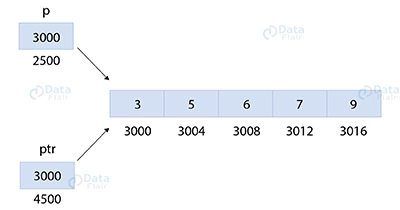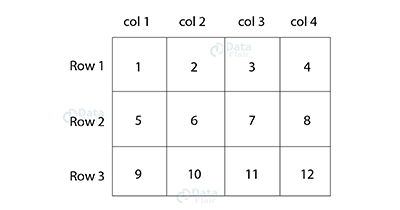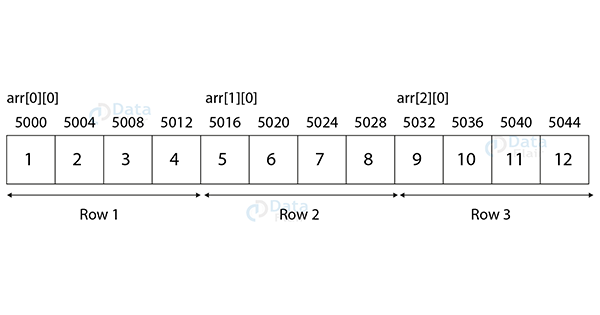Pointers to an Array in C
In the realm of C programming, understanding the dynamics of pointers and arrays is akin to wielding the master key to the language’s power. Among the most potent tools at your disposal are pointers to arrays in c, which unlock a treasure trove of efficiency and flexibility.
This article delves deep into the intricacies of pointers to arrays in C, providing not just theoretical insights but practical examples to illuminate the path.
Pointer to Array Basics in C
Let’s commence our journey with a comprehensive understanding of pointers to arrays. A pointer in C is a variable that stores the memory address of another variable, but when it comes to pointers to arrays, the scope broadens significantly, allowing us to manipulate entire arrays with remarkable efficiency.
#include <stdio.h>
int main() {
int arr[5] = {1, 2, 3, 4, 5};
int *ptr = arr; // Pointer to the first element of the array
printf("Value at arr[0]: %d\n", *ptr); // Output: Value at arr[0]: 1
return 0;
}Output:
Value at arr[0]: 1
In the code snippet above, we declare an integer array arr and a pointer ptr that points to the first element of the array. By dereferencing ptr, we access the value stored in arr[0].
Comparison of Base Types
An essential aspect to comprehend when dealing with pointers is the base type. Pointers to different data types possess different base types.
Let’s explore this with a practical example
#include <stdio.h>
int main() {
int arr[5] = {1, 2, 3, 4, 5};
int *ptr = arr;
printf("Size of int pointer: %lu\n", sizeof(ptr)); // Output: Size of int pointer: 8
printf("Size of dereferenced int pointer: %lu\n", sizeof(*ptr)); // Output: Size of dereferenced int pointer: 4
return 0;
}Output:
Size of int pointer: 8
Size of dereferenced int pointer: 4
In this example, we demonstrate the difference in size between a pointer to an integer and the integer it points to. On most 64-bit systems, the size of the pointer ptr is 8 bytes, while the size of *ptr is 4 bytes, mirroring the size of an integer.
Dereferencing Pointers to Arrays in C
Understanding dereferencing is pivotal. When we dereference a pointer to an array, we obtain the base address of the array.
Let’s illustrate this concept:
#include <stdio.h>
int main() {
int arr[5] = {1, 2, 3, 4, 5};
int *ptr = arr; // Pointer to the first element of the array
printf("Address of arr[0]: %p\n", ptr); // Output: Address of arr[0]: 0x7fff4f32fd50
return 0;
}Output:
Address of arr[0]: 0x7fff4f32fd50
In this code snippet, we employ the %p format specifier to print the memory address pointed to by ptr. Dereferencing ptr provides us with the base address of arr.
Sizes of Pointers to Arrays in C
Understanding the sizes of pointers and their dereferenced values is pivotal for efficient memory management and coding.
Let’s delve into this with a practical demonstration:
#include <stdio.h>
int main() {
int arr[] = {3, 5, 6, 7, 9};
int *p = arr;
printf("Size of int pointer: %lu\n", sizeof(p)); t pointer: 8
printf("Size of dereferenced int pointer: %lu\n", sizeof(*p));
int (*ptr)[5] = &arr;
printf("Size of pointer to int array: %lu\n", sizeof(ptr));
printf("Size of dereferenced pointer to int array: %lu\n", sizeof(*ptr));
return 0;
}Output:
Size of int pointer: 8
Size of dereferenced int pointer: 4
Size of pointer to int array: 8
Size of dereferenced pointer to int array: 20
In this code, we introduce a pointer p to an integer and some other pointer ptr to an array of 5 integers. We exhibit the variations in size among these tips and their dereferenced values.
Pointer to Multidimensional Arrays in C
Our journey now takes us into the enthralling realm of pointers to multidimensional arrays, particularly focusing on two-dimensional arrays.
#include <stdio.h>
int main() {
int arr[3][4] = {{1, 2, 3, 4}, {5, 6, 7, 8}, {9, 10, 11, 12}};
int *p = arr[0]; // Pointer to the first element of the 2-D array
printf("Value at arr[0][0]: %d\n", *p); // Output: Value at arr[0][0]: 1
int (*ptr)[4] = arr; // Pointer to the entire 2-D array
printf("Value at arr[0][0]: %d\n", (*ptr)[0]); // Output: Value at arr[0][0]: 1
return 0;
}In this code snippet, we create a pointer p that points to the first element of the 2-D array arr. Additionally, we introduce a pointer ptr that points to the entire 2-D array. Both pointers enable us to access the elements of the array efficiently.
Pointer Arithmetic in Multidimensional Arrays
Understanding pointer arithmetic is pivotal for navigating multidimensional arrays with ease.
Let’s see how it functions:
#include <stdio.h>
int main() {
int arr[3][4] = {{1, 2, 3, 4}, {5, 6, 7, 8}, {9, 10, 11, 12}};
int (*ptr)[4] = arr; // Pointer to the entire 2-D array
printf("Value at arr[1][2]: %d\n", ptr[1][2]); // Output: Value at arr[1][2]: 7
printf("Value at arr[2][3]: %d\n", ptr[2][3]); // Output: Value at arr[2][3]: 12
return 0;
}Here, we demonstrate how pointer arithmetic simplifies the process of accessing individual elements of a 2-D array.
Subscripting Pointer to an Array
To complete our exploration, let’s delve into subscripting pointers to arrays, specifically within the context of a 2-D array.
#include <stdio.h>
int main() {
int arr[3][4] = {{10, 11, 12, 13}, {20, 21, 22, 23}, {30, 31, 32, 33}};
int (*ptr)[4];
ptr = arr;
printf("Value at arr[1][2]: %d\n", ptr[1][2]); // Output: Value at arr[1][2]: 22
return 0;
}In this code snippet, we declare a 2-D array arr and a pointer ptr to an array of 4 integers. By assigning arr to ptr, we enable subscripting to access elements of the 2-D array efficiently.
Conclusion
Our adventure via pointers to arrays in C programming has traversed the foundational aspects, delved into the nuances of pointer mathematics, illuminated the sizes of tips, and unveiled the mysteries of multidimensional arrays. Equipped with this profound know-how, you may harness the full capability of recommendations to create efficient, dynamic, and effective C applications.
As you preserve your programming odyssey, bear in mind that tips aren’t simply tools; they are the important thing to unlocking the real capabilities of the C language.
This detailed exploration of pointers to arrays in C serves as a solid foundation for further studies in C programming and provides a deep understanding of how to optimize your code for performance and efficiency.
Did we exceed your expectations?
If Yes, share your valuable feedback on Google




